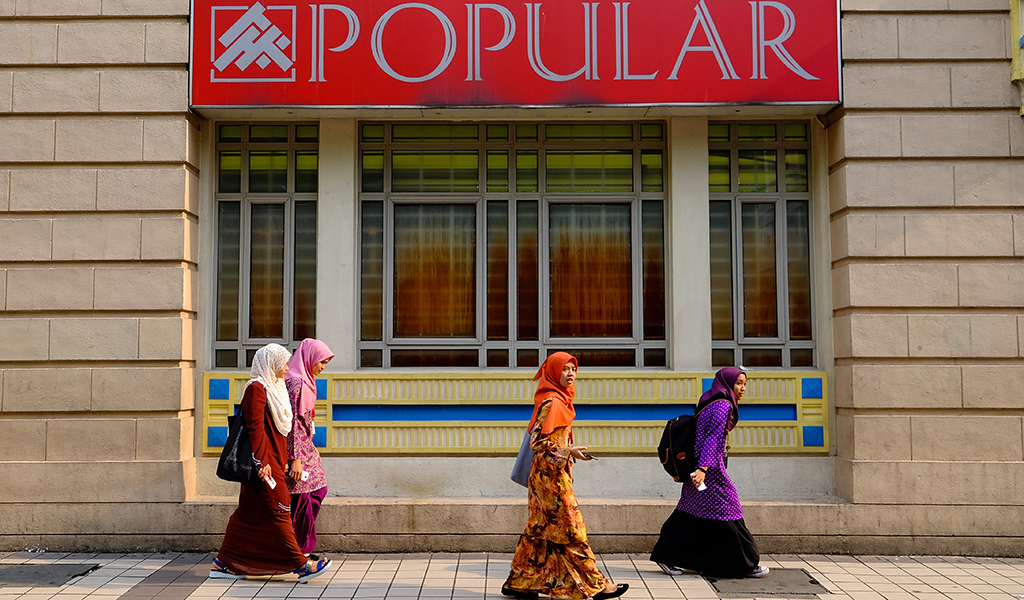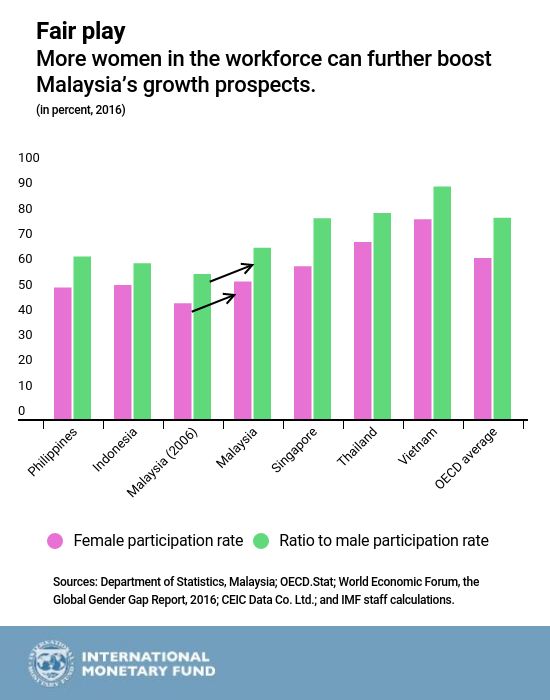April 2, 2018
Version in baˈhasa indoneˈsia (Indonesian)
[caption id="attachment_23063" align="alignnone" width="1024"] Four students walk past a bank in Kuala Lumpur, Malaysia: Policies like improving the quality of education can help the country increase the number of women in the workforce (photo: John Mulligan/iStock by Getty Images).[/caption]
Four students walk past a bank in Kuala Lumpur, Malaysia: Policies like improving the quality of education can help the country increase the number of women in the workforce (photo: John Mulligan/iStock by Getty Images).[/caption]
Malaysia, a country well on its way to achieving high income status, can increase the number of women in the labor force by implementing key labor market reforms. And the country should, because our research shows that more women in the workforce benefits the economy.
Between 2010 and 2016, women’s employment in Malaysia grew at a faster pace compared to male employment, at 4½ percent and 2 percent compound annual rates respectively.
Health and hospitality services, and the public sector saw the highest rate of increase in female employment.
Still, Malaysia has the potential to do more. As our Chart of the Week shows, Malaysia’s labor force participation rate for women, when compared to some of the regional economies and the Organization for Economic Co-operation and Development (OECD) average, remains just above 54 percent. This is low, both in absolute and relative terms. As a comparison, men’s participation rate is about 80 percent.
Women count. According to IMF analysis, the contribution of female employment to Malaysia’s economic growth has increased at a faster pace in recent years—on average from 4 percent from 2001 to 2008, of real GDP growth, to 14 percent from 2011 to 2016.
Meanwhile, contributions by male workers increased from about 7 percent of GDP to about 13 percent of GDP.
If the female labor force participation rate had not changed since 2012, real GDP would have been about 1 percent lower in 2016 compared with what it was that year.
So, what can Malaysia do to keep this momentum going?
One of the key priorities of the government’s 11th Malaysia Plan is to improve the female labor participation rate by 5 percentage points to 59 percent by 2020.
For this to happen, education is key. Enrollment rates in high school and university education are now higher for women than for men, and this can help explain the higher share of skilled occupations in women’s employment.
But for less educated women, labor force participation rates are particularly lower relative to men. And incidence of unemployment is higher for women, particularly for those living in rural areas, aged below 29 years, or primary school educated.
Although, public spending on education, as a share of GDP, is much higher in Malaysia than in peer countries, the country needs to improve the quality of education.
The good news is that the government is paying attention. For example, the Malaysia Education Blueprint Plan aims to improve the quality of education and build skills that are viable in the global market.
The government’s 2018 budget includes policies that have the potential to improve women’s labor force participation, such as:
-
Increasing the duration of maternity leave for the private sector to 90 days to match that of the public sector;
-
Setting a minimum of 30 percent participation of women in boards of government-linked companies and investment companies by end-2018;
-
Implementing personal income tax exemptions on a maximum of 12-months consecutive salary for women, with a career break of at least two years for those who intend to return to the workforce between 2018 and 2020.
Other policies, like increasing access to childcare facilities and family–friendly labor laws, could also help as most women report housework or family responsibility as the dominant reason for being outside the labor force.





